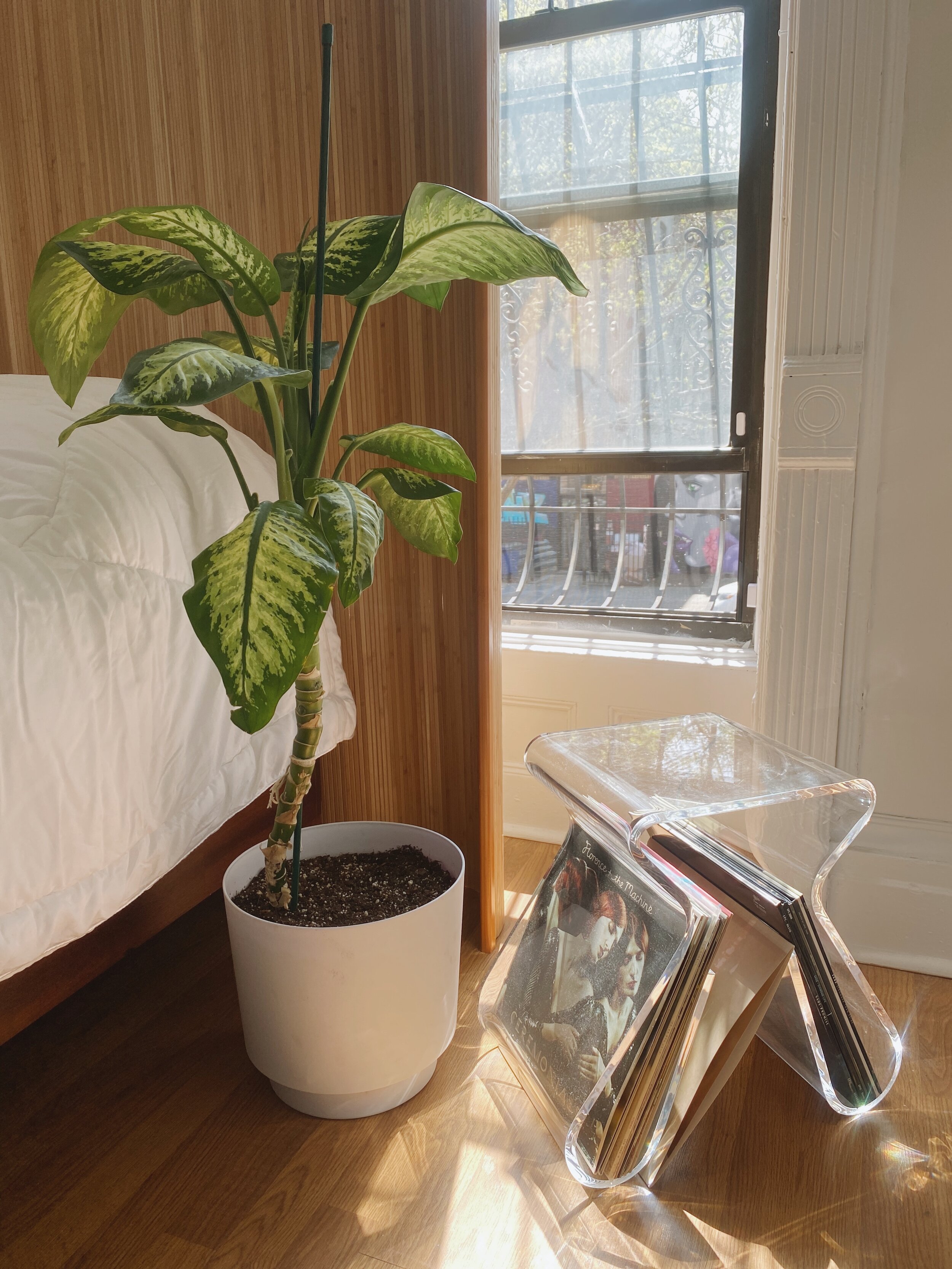Eryn Danielle
Image via Eryn Danielle Instagram @eryn__danielle
Eryn Danielle is a Brooklyn-based movement artist, creative storyteller, and model. She’s an advocate for the use of vintage, second-hand, and fair fashion in her editorial work. “I style shoots myself using second-hand sourcing and/or vintage fashion methods. I do so to show how approaching high fashion and editorial shoots from the second-hand/vintage approach can create a unique experience and visual story. Second-hand fashion is beautiful, unique, and requires thought and intention that is a necessary part of visual storytelling.”
What led you to start being more conscious of your fashion/lifestyle choices? And what have you changed as a result?
“I initially became more conscious learning from close friends and roommates who have made sustainability and conscious consumerism a key part of their advocacy and lifestyle. Particularly, Reza Cristian (the founder of Sustain the Mag) and Natasha Halesworth (Founder of the Consistency Project) have been pivotal to my journey.”
“Freeing myself from this need to constantly be spending, shopping, and buying new has allowed creativity, patience, and quality to influence my style and what I choose to bring into my home. I genuinely must like everything I purchase and see an immediate need for it in my life, thus curbing waste and frivolous purchases that only brought me temporary joy. The furniture I source and the clothes I find require days of sourcing on Depop, eBay, and various vintage/second-hand sellers. It's a much slower process, but when you truly find what you're looking for it feels much more unique and sentimental. I value my individuality and shopping second-hand/vintage fuels that desire. I don't worry as much about what someone else has, because what I've found either has a story, has generational/sentimental value, or was a once-in-a-lifetime purchase.”
When did you start thrifting and shopping second-hand for furniture?
“I started shopping for second-hand furniture in 2019! I started sourcing clothing first as it was easier, and I didn't have as much space for unique furniture. Now, I'm settling into a space that is my own and it's been so rewarding to see how the pieces I've slowly sourced are seamlessly finding their place in my new apartment.”
How do you keep up with the latest trends without over-consuming?
“It's great to be conscious and inspired by what's happening within the fashion and home decor spaces, but I also don't force myself to like things just because they're popular. If anything, once I see something too many times, I tend to get bored of it quickly. Everything that new brands are creating nowadays has been heavily influenced by vintage designs. There's a great chance that you can find something that speaks to the timelessness of the trend, without necessarily buying from a particular brand or manufacturer.”
“I would say stick to your budget and your needs and then make decisions going from there. With furniture, there's only so much you can buy until your space becomes crowded!”
Could you recommend one simple lifestyle change for someone who is looking to reduce their fashion waste?
“Yes! Take healthy breaks from Instagram/social media. There's a constant influx of content like unboxing, outfit of the days, hauls, etc. that can be particularly triggering for me. I choose not to watch or engage too much with that content. Also, don't worry so much about what someone else is wearing. I've found that the best-dressed people are those who create a foolproof wardrobe based on garments they TRULY love. Everything fits the way someone wants it to, imperfections have been amended, and each garment is given care. I do quarterly closet purges to assess where I'm at. It's ok if your style/taste changes, but just know you're responsible for the life cycle of the clothing you purchase.”
How do you see the fashion industry and sustainability working together in the future?
“I'd love to see fewer collections from brands! Size inclusivity, garment quality, and fit are something that can't be rushed, so it truly doesn't make sense to continue along this path of new clothes coming out every week, every month, or even every two months.”
“It would be amazing for sustainability efforts to partner with garment worker advocates to begin dismantling the pollution, classism, and cycles of poverty that are linked to fast fashion. Many garment workers are not making liveable wages and are working in hazardous conditions. I believe advocating for the workers is a key tenet of sustainability efforts. Fashion leaders need to understand how they are complicit in harming the planet and people by continuing on this fast fashion business model.”
How did you start Allies Doing Work?
“I began Allies Doing Work in May of 2020. I had studied Human Rights and Race Studies at Columbia University and wanted to utilize everything I had learned to create a space that was dedicated to intersectionality and anti-racism from a non-white-centric point of view. I felt that the conversations could be pushed further, could be more intersectional, and could take even a global approach. After years of people telling me my degree was useless, there's now a crucial need for anti-racist education, leadership, policy changes, and more.”
What are your plans for the future of Allies Doing Work?
“My biggest goal is to show people that any person of any background can be equipped with a dedication to anti-racism and intersectionality. I hope that individuals feel empowered to combine their passions with their activism, just like I do. I'm a dancer and model, using my knowledge to not only improve the industry I work in but the world. I want to continue dismantling racism, sexism, homophobia, transphobia, xenophobia within every industry: fashion, politics, education, music, movies, television, food, technology, architecture, wellness, and more. The possibilities are endless and there's work to be done in every sector of the world.”



